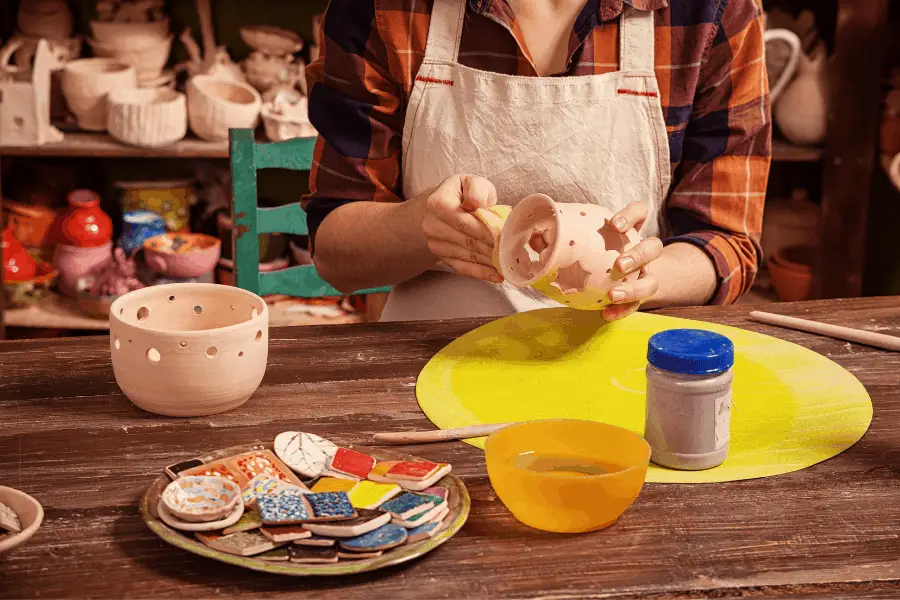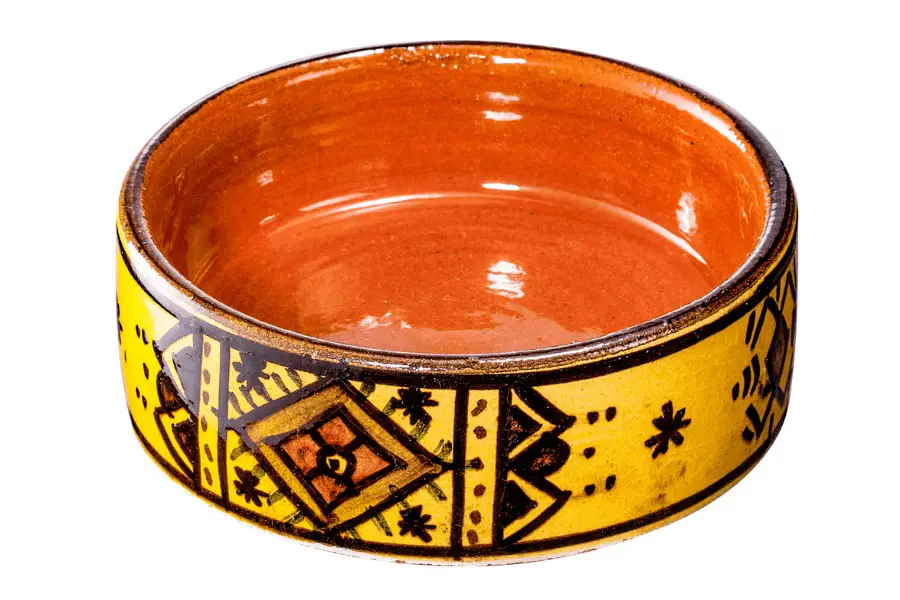When you are working on a project with clay, there is a high possibility that you will want to paint it. You might be wondering what the best type of paint is for clay. There are many different types of clay out there, and in this article we ago over the best ones. Let’s read on!
So, can you use gouache paint on clay? Yes you can, but you may need to layer quite a bit, and use a primer. Gouache is usually pretty thin, which can mean you need multiple layers to cover the clay. This characteristic doesn’t make gouache unusable on clay, you just need to add another layer or two.
Painting with gouache on clay is incredibly easy, but since it has the tendency to be thin, you might have some trouble with it running if the surface isn’t completely flat. Make sure you take this into consideration for your specific project.
How Do You Use Gouache on Clay?

Using gouache on clay is very similar to how you would paint with gouache on paper. You will first need to mold the clay and decide whether you are going to bake the clay before or after you paint it. However, it is recommended that you are baking before you paint, let the clay cool completely before you try to add any paint.
I like to use Craftsmart Natural Clay for my projects. It comes in a 10lb option, and you can choose between a natural, white or terracotta color.

You will get the best results from the gouache if you apply a primer to the surface of the clay first. The best option is an acrylic gesso primer. This will increase the absorbency of the clay and allow the paint to stick easier. This will also prevent cracking and peeling in the future.
Liquitex is a gret primer that can be used on gouache, acrylics, and even oil paints.

When the primer is applied and dry, you can get your paints ready. It is recommended to put the paint on a palette so you can easily mix your colors. Once you have all of your paints ready, you can paint on the surface of the clay.
Can You Use Gouache on Air-Dry Clay?

Gouache is a great option for paint air-dry clay. You will need to wait for the clay to dry completely before you try to paint on it. This could take a few days depending on the size. If you paint it before the clay is dry, you can end up with some deformities in the clay and your project won’t look right anymore.
Painting the air-dry clay before it’s dry can also cause the clay to dry unevenly. Since gouache is water-based, the clay will absorb the water from the paint while it continues the drying process. This can result in cracks in both the clay and the paint down the line.
This DAS Air Dry Clay is my top pick for air drying clay. It’s a great brand, and I use this for my air dry clay bowls and small plates I make.

If you can avoid it, do not add water to your gouache paints. This will keep them a little thicker and easier to control on the clay surface. You also want to limit the amount of water you put on the clay because too much water can soften the clay back up and crack when it dries again.
Paint your design on the clay and let it dry before you try to move it. Gouache dries pretty quickly, but you should wait about 24 hours for it to cure fully before you try to move it. If you touch and move the clay too early, you can end up with dents and fingerprints that are annoying, and you can’t get rid of.
Can You Use Gouache on Polymer Clay?

You can use gouache on polymer clay. After you bake the polymer clay, let it cool down before you touch it. You will want to use a fine sandpaper to rough up the surface and make it easier for the paint to stick to. Make sure you avoid applying too much pressure or you risk ruining your hard work.
I recommend using Arteza Polymer Clay. It’s amazing quality, and they have tons of color options!

It is also recommended that you use a primer, like an acrylic gesso, on top of the polymer clay. This combined with the roughed-up surface will make it incredibly easy for the paint to stick to the surface as it should.
After the primer dries, you can start painting. It is most beneficial to paint in thin layers to make it easier for the paint to dry and create a smoother finish. You can add more than one layer if you aren’t happy with the coverage from the first but be sure to keep every additional layer just as thin.
Let the paint cure before you try to touch it or move it. As stated above, you should wait about 24 hours before you try to touch the paint or you risk adding a dent or a fingerprint to the surface of your clay.
Do You Paint Clay Before or After Baking?

Technically, you can paint clay either before you paint or after you paint. However, it is much more common for artists to paint clay after they bake it. This is because paint puts moisture into the surface of the clay, which can impact how the clay cures in the oven.
If you bake the clay before you paint, make sure you wait for the clay to cool down to room temperature before you try to paint on it. This will protect you from any potential burns from the clay being too hot.
Baking the clay first is a huge benefit because you don’t have to worry about the paint creating extra moisture inside the clay. The clay will already be dry and cured when you add the paint after baking, which will decrease the potential for cracks forming during the baking process due to the clay drying improperly.
Do You Need to Seal Gouache Paint on Clay?

It is highly recommended that you seal your gouache painting on your clay. Sealants have so many benefits including protecting your paint and making it appear brighter or darker. They will also help you stay away from potential cracks and dents from occurring over time as it gets moved from place to place.
There are multiple different ways that you can seal your gouache painting to clay. The most popular is with an acrylic sealant because it is water-based. There’s also Mod Podge, which comes in matte, satin, and even glitter finishes. The only thing about Mod Podge is that it will take longer to dry than an acrylic spray.
I highly recommend using Krylon Acrylic Sealer. You can choose either a glossy or matte finish. This protects it against chipping, flaking and even UV rays! Krylon should be complete dry in about 4-8 hours.

Final Thoughts
Painting on clay is such a fun activity, but what is the best way to do this? There are so many different types of paint available to choose from, it can be overwhelming. Gouache is a fantastic option for painting on clay. It is thin but applies smoothly and leaves you with a vibrant painting on your clay.
Since clay usually needs to be baked, which will help it cure and harden. You can paint the clay either before or after you bake it, but it is highly recommended that you paint after you bake. If you bake after painting, you can end up with uneven drying and some parts that don’t even dry at all.
When you are finished with your clay project, you can seal it with an acrylic sealer to protect your painting from chipping and cracking. You will be able to enjoy your painted clay for years to come with a little help from a sealant.
Make sure to follow all my tips and recommended products to ensure your gouache painted clay project turns out great! Also, don’t forget to check out my other articles for all your painting Q&A’s. Happy painting!

